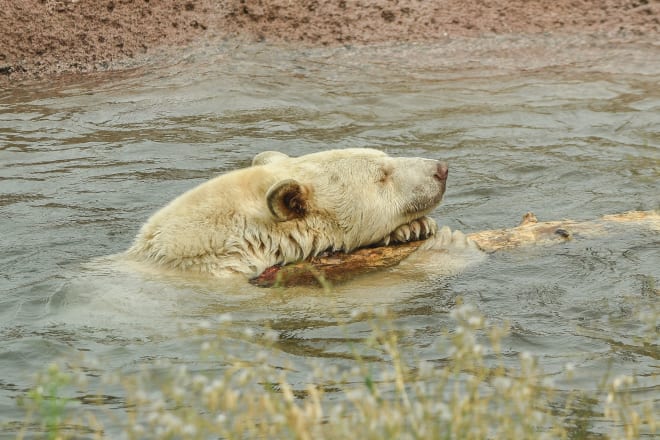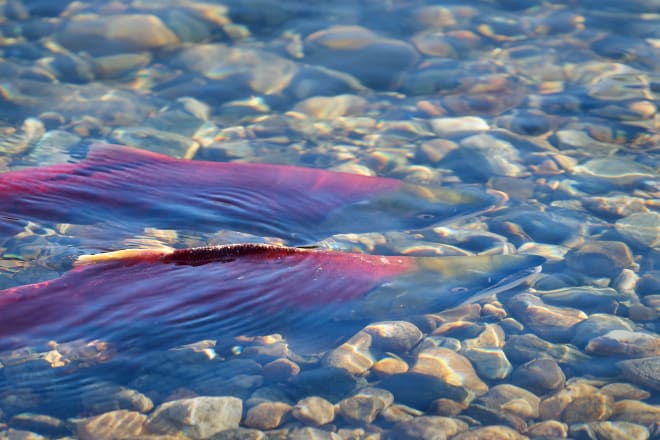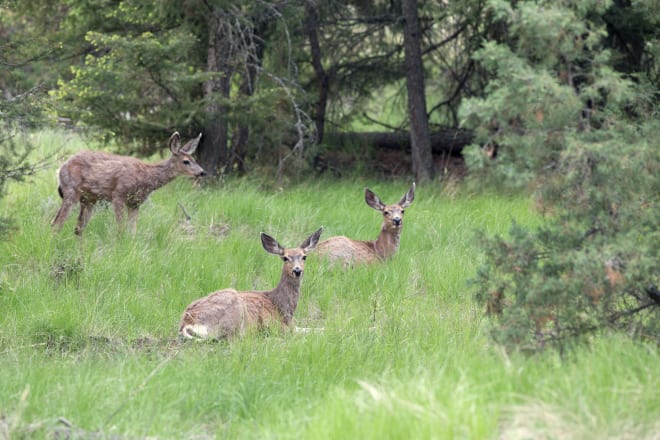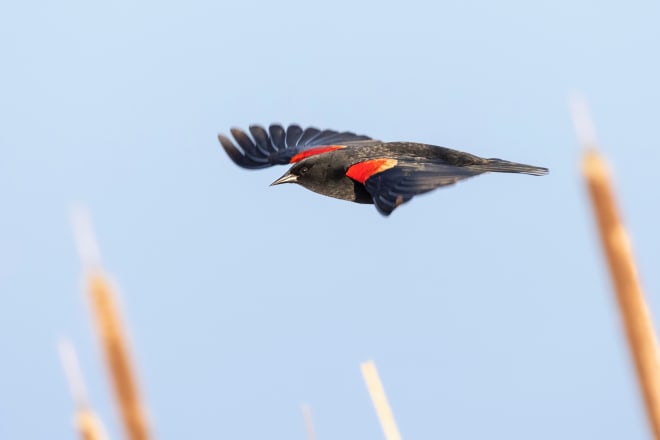Kamloops offers some of the most accessible wildlife viewing opportunities in British Columbia. From protected natural areas to riverside trails, this region supports diverse ecosystems where many species thrive. Here is where you can find wildlife across different habitats near the city.
BC Wildlife Park: Up Close with Local Species

Located on the outskirts of Kamloops, BC Wildlife Park provides an opportunity to observe native animals in environments that replicate their natural habitats. The park houses around 200 animals across 65 species indigenous to the province. It also serves as a rehabilitation centre for injured and orphaned wildlife.
Visitors can see animals such as cougars, bobcats, and wolves. Clover, the only Kermode bear in human care, is a central attraction. The park's aviary houses birds of prey, including bald eagles and owls. Interactive displays provide insights into local ecosystems and conservation efforts. Educational programs and walking tours make this location ideal for families and those learning about wildlife.
The park also offers activities designed to engage younger visitors, including a miniature train ride and play areas. For those wanting a hands-on experience, certain programs allow limited interactions with select animals. Seasonal events such as holiday-themed light displays and wildlife talks provide additional engagement opportunities.
Lac du Bois Grasslands Protected Area: Expansive Open Spaces

The Lac du Bois Grasslands, just north of Kamloops, offers a vast area of undisturbed grasslands, forests, and wetlands. Spanning over 15,000 hectares, this protected area supports both resident and migratory wildlife. The semi-arid climate and unique vegetation make it a critical habitat for many species.
Mule deer and bighorn sheep can frequently be seen foraging along hillsides. Raptors such as eagles and hawks patrol the skies. The grasslands also serve as a breeding ground for smaller birds like sharp-tailed grouse and long-billed curlews. Reptiles, including western rattlesnakes, are also present but generally avoid human interaction.
Coyotes and foxes are also known to roam the grasslands, often spotted in the early mornings or evenings. In the wetter areas, amphibians such as western toads and Pacific tree frogs can be heard during the breeding season.
To increase the chances of wildlife sightings, it is best to visit early in the morning or at dusk. Trails throughout the area offer opportunities for both casual walkers and serious hikers. Staying on marked paths reduces the risk of disturbing animals and their habitats.
Thompson River and Kamloops Lake: Life Along the Water

The Thompson River and Kamloops Lake are essential for many species in the region. These water bodies create a riparian environment that supports birds, fish, and mammals. The seasonal salmon runs are particularly significant, drawing predators and scavengers.
Bald eagles and ospreys are commonly observed along the riverbanks, especially near spawning areas during the autumn. Ducks, geese, and other waterfowl inhabit calmer sections of the river. Pacific salmon migrate through the Thompson River system, contributing to the health of surrounding ecosystems.
River otters are occasionally seen swimming near quiet stretches of the river, while muskrats are often observed building lodges along the shoreline. During winter, large gatherings of trumpeter swans can be found in ice-free areas of Kamloops Lake.
For viewing, the Aviation Way Trail near Kamloops Airport offers access to areas with high bird activity. Nearby nature reserves and observation platforms allow for undisturbed wildlife watching. During salmon spawning seasons, visitors can also explore tributaries like the Adams River, known for its large sockeye runs.
Wells Gray Provincial Park: Remote Wilderness Experience

Wells Gray Provincial Park, located a short drive from Kamloops, is known for its large, intact wilderness areas. The park features forests, lakes, and waterfalls that provide habitats for large mammals and other wildlife. It is one of the best places to see moose, black bears, and wolves in their natural environment.
Bird species in the park include various raptors and smaller songbirds. Wildlife activity peaks in spring and autumn when animals are more active and visible. Some trails and viewing platforms are positioned to maximize the chances of encountering wildlife.
Elk and lynx are occasionally observed in remote parts of the park. The lakes and streams within the park support beaver populations and are frequented by water birds such as loons and mergansers.
Visitors are encouraged to explore the park responsibly by maintaining a safe distance from animals and following park guidelines. Guided tours are available for those who want structured wildlife-viewing experiences.
Paul Lake Provincial Park: Tranquil Lakeside Habitat

Paul Lake Provincial Park is located a short distance east of Kamloops. The park’s lake and surrounding forests attract a variety of wildlife. Common sightings include mule deer, squirrels, and various species of ducks and grebes on the lake. Bald eagles are often seen circling overhead, especially near the water.
The park’s forested trails are home to woodpeckers and smaller mammals like marmots. During early mornings or evenings, visitors may spot beavers working along the lake’s edge. The calm atmosphere and clear water make it an excellent spot for nature observation and photography.
Tranquille Wildlife Management Area: Vital Wetlands

Located at the western end of Kamloops Lake, the Tranquille Wildlife Management Area protects a critical wetland habitat. The area serves as a stopover point for migratory birds during their seasonal movements. Species such as sandhill cranes, and great blue herons can be observed here.
In addition to birdlife, the wetlands provide a home for amphibians like frogs and salamanders. Small mammals, including muskrats, are often seen in the marshes. Observation platforms and walking paths allow visitors to explore the wetlands without disturbing sensitive habitats.
Urban Spots: Nature Within City Limits

Kamloops offers urban wildlife viewing locations for those who prefer to stay close to the city. Tk’emlúps Marsh, located across from the former Kamloops Indian Residential School, attracts a variety of bird species. Herons, red-winged blackbirds, and woodpeckers can often be seen here. Occasionally, deer and beavers appear near the marsh.
Peterson Creek Nature Park, located near downtown, features trails that pass through diverse habitats. It provides opportunities to observe smaller mammals, reptiles, and birds. This park is popular among locals for both recreation and wildlife observation.
Other urban locations include Riverside Park and the trails around Kenna Cartwright Nature Park. These areas attract species such as squirrels, rabbits, and a variety of songbirds. Sightings of larger mammals like coyotes have also been reported, particularly in less-trafficked sections of these parks.
These accessible spots highlight how nature and urban life intersect in Kamloops. They offer easy ways to engage with wildlife without needing to travel far.
Responsible Wildlife Viewing Practices

Respect for wildlife and habitats is critical when observing animals. Keeping a safe distance prevents stress and disturbances. Visitors should follow local regulations, stay on designated trails, and avoid feeding animals.
Wildlife viewing can provide an opportunity to learn about conservation and the importance of maintaining ecosystems. By acting responsibly, visitors help ensure these natural areas remain safe for future generations.





